How to Photograph Marin — Tips From a Pro
January 30, 2020
West Marin landscapes are a photographer’s dream: grassy hillsides dotted with dairy cows, weathered barns and thick oak groves, the soft light of coastal fog, windblown cypress set against Tomales Bay and ranchers at work on the land. Local photographer Paige Green has captured these scenes on MALT-protected farms and ranches since 2005, offering unique perspectives and compelling moments that help to tell MALT’s story.
Paige found her passion for photography when she was studying geography in college. Tasked with photographing clouds in California’s Sierra Nevada, she fell in love with light. Lucky for MALT, she later found her way to Chileno Valley and the farmland of West Marin. We’ve asked Paige to give an insight into how she approaches capturing our local landscape.
Ready to explore MALT-protected lands through your camera lens? Let Paige lead the way!
Hi MALT Friends!
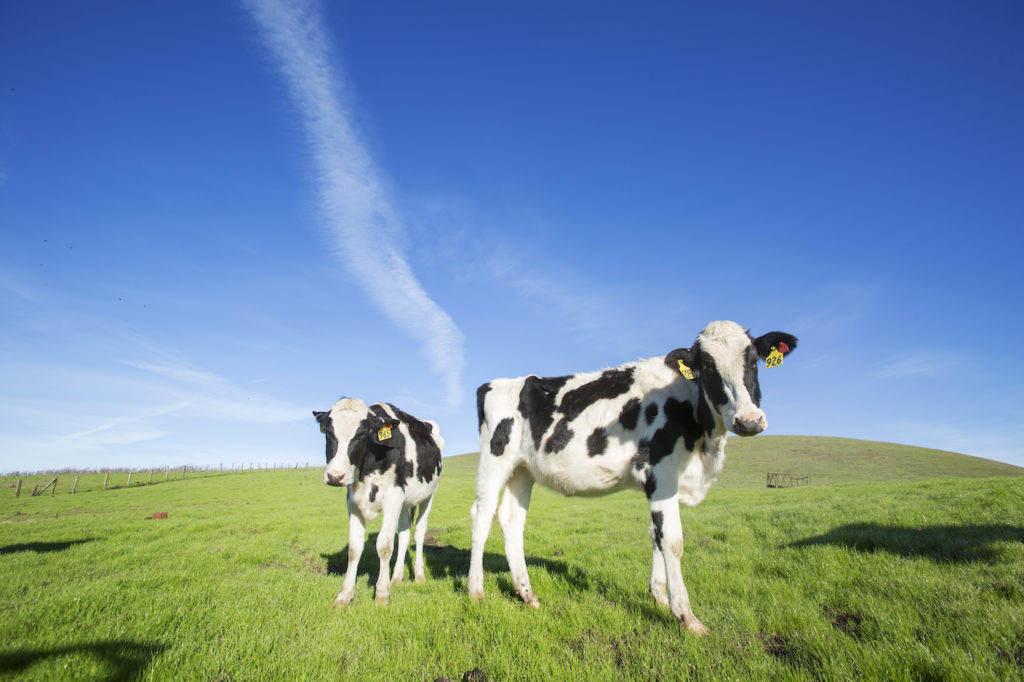 Bianchini Ranch, 705 acres, MALT protected in 2018
Bianchini Ranch, 705 acres, MALT protected in 2018
Photo details:
Aperture Value: 6, Flash: Off, Focal Length: 16
Photographic Sensitivity (ISO): 160, Shutter Speed Value: 1/250
We live in one of the most beautiful places in the world and I feel so lucky that I have been able to help MALT document the preservation of this land and culture since I moved to my husband’s family ranch on Chileno Valley Road in 2005.
After 15 years of photographing the agricultural community of Marin County, I am honored to have the opportunity to share some quick photography tips that I’ve learned over the years.
The most important rule of photography: it’s all about LIGHT!
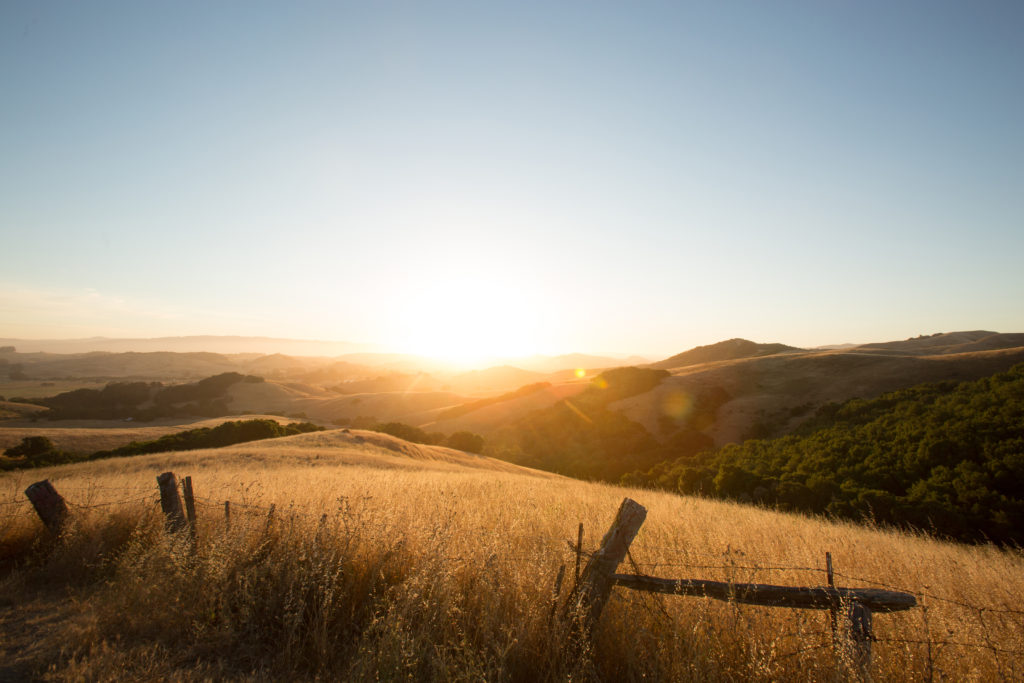 Wilson Hill Road Ranch, 491 acres, MALT protected in 2016
Wilson Hill Road Ranch, 491 acres, MALT protected in 2016
Photo details:
Aperture Value: 6.644, Flash: Off, Focal Length: 16
Photographic Sensitivity (ISO): 400, Shutter Speed Value: 1/160
Photography literally means: light drawing. You can’t have photography without light. Try turning off the lights at night and taking a photo. Spoiler alert: it doesn’t work unless you have a really long exposure and a tripod, or a night vision camera.
The better your light, the better your photographs.
So, the number one tip for how to take good photos is find good light. (Say that three times.)
How do you find good light?
Photographers love to photograph at sunrise and sunset because the sun is at a lower angle in the sky, which makes the shadows more interesting and the light more beautiful. What’s more, these are the times when animals (wild and domestic) are the most active. It’s a win-win.
Avoid photographing in the middle of the day because the sun is directly overhead, creating harsh shadows.
If you have to photograph in the middle of a bright sunny day, look for shade. My favorite studios in the world are barns and greenhouses, but shade from a tree works, too.
If you can’t photograph during the first or last light of the day, try to photograph when the sun is at an angle. Play with the direction of your camera — photograph away from the sun, or photograph into the sun.
If people tell you that you can’t photograph into the sun, don’t listen. I love photographing into the sun to have my subjects backlit. I love it even more when there is lens flare, or when my subjects are silhouetted against the sky.
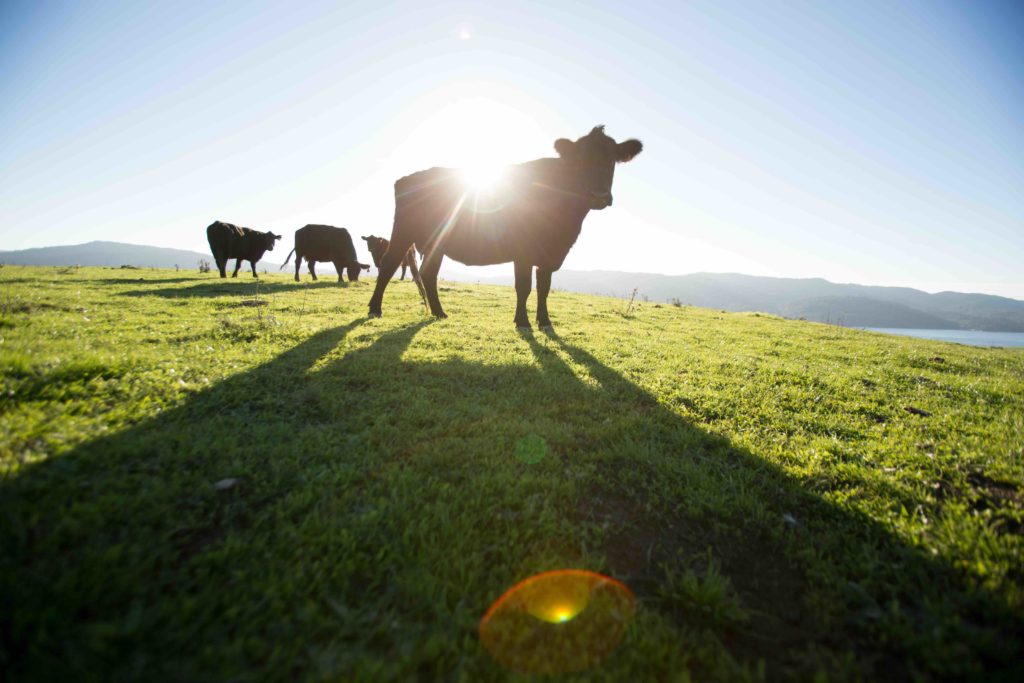 Stanley Martinelli Ranch, 602 acres, MALT protected in 2017
Stanley Martinelli Ranch, 602 acres, MALT protected in 2017
Photo details:
Aperture Value: 3.615, Flash: Off, Focal Length: 16
Photographic Sensitivity (ISO): 100, Shutter Speed Value: 1/640
Photographing into the sun means you need to know how to control your camera settings more than photographing on automatic. Or, if using an iPhone, it means you need to put your finger on your screen and touch where you want the exposure to be. Try it. It’s fun. The beauty of digital photography is you get to see your results as you go and you can delete what you don’t like later. So, play with light. It’s one of my most favorite things to do.
Fog can be your photographing friend. I love foggy days in Marin because the fog works like a giant diffuser in the sky, softening the shadows. Of course, it also means your skies may lack interest and after a while you’ll feel like you do at the end of three months of fog — enough already, we’re ready for some sun!
The very best days for photographing are days with puffy clouds that diffuse the sun a little, but that also give you interesting textures and shapes in the sky. If you see clouds, grab your camera and go play.
After you’ve found the good light, move on to composition.
Compose your photo in the camera.
Think of your photo as a frame. Everything in your frame should be there for a reason. If it isn’t part of the story, then it is distracting and you need to re-adjust your frame.
Layer your photos: think foreground, middle ground, background. See if you can have interesting elements that lead your eye all around the photographs you take. Photograph a cow through a barn window with a hill in the background. Or photograph a cow through a fence with a tree in the background. Or photograph a cow through a… (you get the idea).
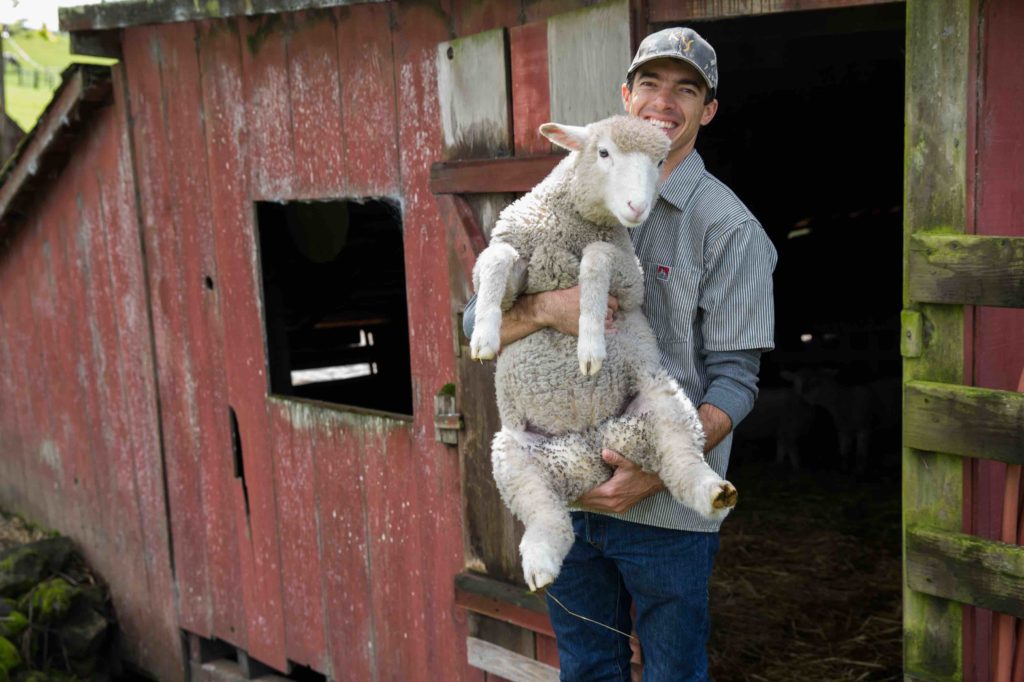 Jensen Ranch, 179 acres, MALT protected in 1992
Jensen Ranch, 179 acres, MALT protected in 1992
Photo details:
Aperture Value: 4, Flash: Off, Focal Length: 41
Photographic Sensitivity (ISO): 160, Shutter Speed Value: 1/250
Look for lines that lead your eye toward your subject — horizon lines, barn lines, steer horn lines, etc. Speaking of lines, make sure those horizon lines are straight. Mine are always crooked and I have to straighten them in photoshop later.
Move your body.
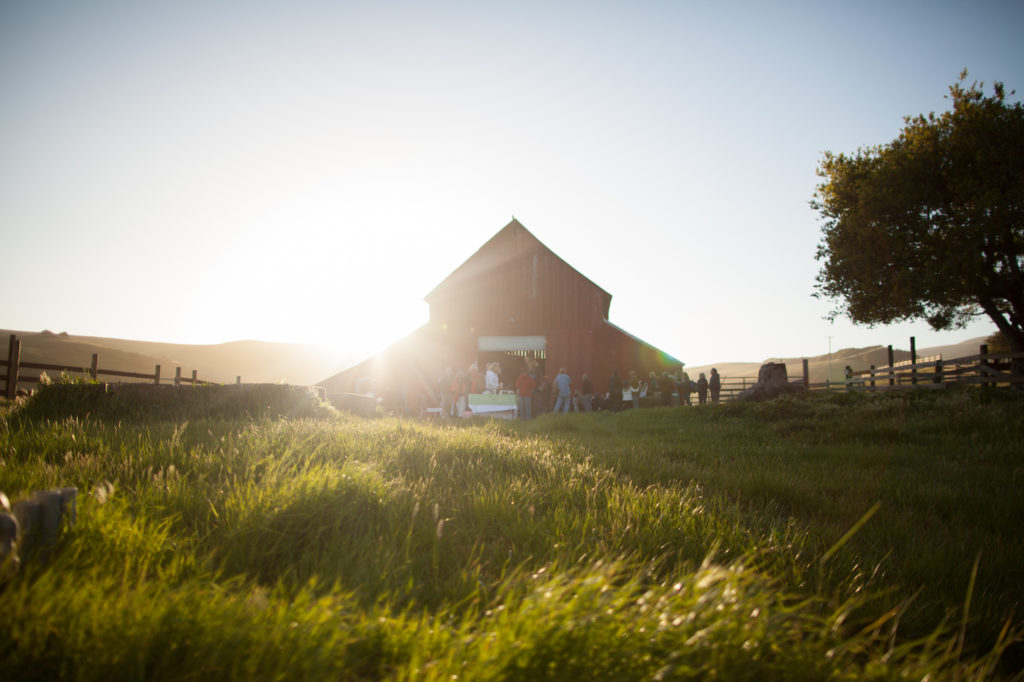 Moore Ranch, 1,008 acres, MALT protected in 2004
Moore Ranch, 1,008 acres, MALT protected in 2004
Photo details:
Aperture Value: 1.696, Flash: Off, Focal Length: 24
ISO Speed Ratings: 100, Shutter Speed Value: 1/2500
If you look in my closet you’ll find almost all of my pants have a hole in the right knee. I crawl on the ground a lot. I also climb a lot of ladders, trees, trucks and fences. Getting on the ground and photographing up can offer new and interesting perspectives. And, getting on the ground is a great trick for photographing our West Marin cows. They’re curious creatures, often getting right up in your camera lens. If you add that backlit halo you get when you’re photographing into the sun (remember the light!) an ordinary dairy cow becomes majestic, even saintly.
I also photograph with fixed lenses, meaning I can’t zoom my lenses in and out. If I want the image to be closer, I have to move my body closer to the subject. It also means that I have perfected my stealthy sneak-up-on-animal walk. It’s one of my greatest accomplishments and it’s on my resume.
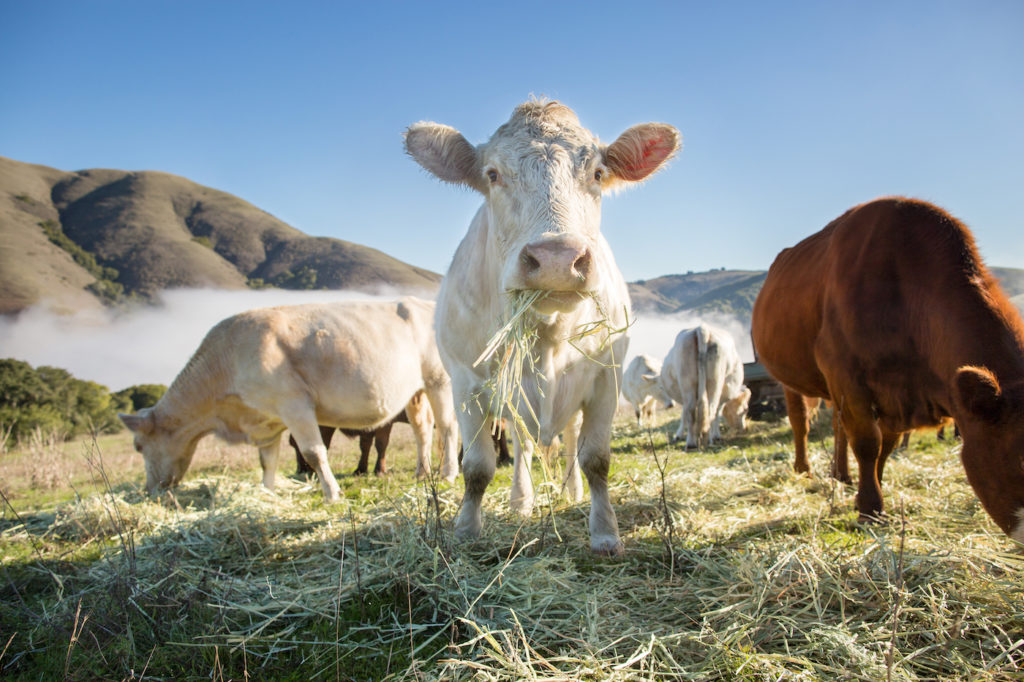 Gallagher North Bend Ranch, 330 acres, MALT protected in 2016
Gallagher North Bend Ranch, 330 acres, MALT protected in 2016
Photo details:
Aperture Value: 4.644, Flash: Off, Focal Length: 24
Photographic Sensitivity (ISO): 250, Shutter Speed Value: 1/2000
Most importantly — have fun. Don’t worry too much about rules. Try everything. See what you like, delete what you don’t and try again. The more you photograph, the better you’ll be, especially if you remember to find good light!
Have fun out there,
Paige Green
Paige Green Photography: paigegreenphotography.com
You can find more of Paige’s work on Facebook and Instagram!